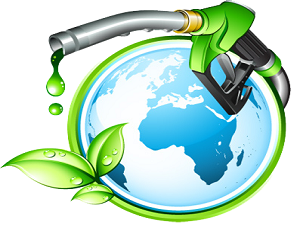
United States
The United States is the world’s largest soybean producer. Its soybean oil has surplus in addition to its own use and exports, and there is still room for further development of soybean production. Therefore, the main raw material for biodiesel production in the United States is soybean oil. According to the statistics of the US Department of Energy, the US biodiesel production in 2004 reached 94,000 tons. In 2005, the production of biodiesel was about 284,000 tons. In 2006, the output of biodiesel reached 940,000. As of September 2006, there were 81 biodiesel production plants in the United States, and another 82 projects are under construction or expansion. In addition to abundant soybean oil resources, the United States has successfully cultivated high-oil content “engineered microalgae” and opened up new biodiesel production materials.
The abundant raw material resources have laid a solid foundation for the rapid development of the US biodiesel industry. In addition, the US government has provided strong support for the biodiesel industry in terms of taxation and financial subsidies, which has made the US biodiesel industry develop rapidly. It has become the world’s second largest biodiesel producer and has a large number of exports to the EU. The biodiesel industry has had a strong impact to the EU.
(more information about biodiesel,pls click!)

2 Brazil
Brazil is the second largest soybean producer in the world. Since 2004, the Brazilian government has implemented the National Biodiesel Production Plan, which allows the production of biodiesel using a variety of technologies and offers a number of tax-free benefits. In 2005, Brazil enacted the implementation of the first domestic biodiesel sales law, requiring that all diesel must be added with 2% biodiesel from 2008. By 2013, biodiesel must be added at 5%. At the same time, the Brazilian government decided to increase the amount of biodiesel in diesel from the current 2% to 3% from July 1, 2008. The Brazilian Ministry of Mines and Energy said it is expected to achieve the goal of adding 5% biodiesel ahead of schedule in 2010. According to statistics, in 2007 Brazil imported a total of 2.9 billion L of diesel, and its annual production capacity of biodiesel was 2.5 billion L. At present, Brazil consumes about 40 billion L of diesel per year.
3 Argentina
Argentina, bordering Brazil, is the third soybean producer in the world. Due to the abundant resources of soybean oil, the biodiesel industry is also developing very rapidly. In 2008, Argentina became the world’s third-largest producer of biodiesel, with total biodiesel production exceeding 10% of world production and sales exceeding $1.5 billion. In the same year, the total production capacity of Argentina’s biodiesel production equipment increased by 150% compared to 2007. In 2008, the country’s new biodiesel production capacity reached 840,000 tons and 18 sets of commercial biodiesel devices with a total capacity of 1.4 million. It is expected that by the end of 2009, the number of biodiesel devices in Argentina will increase to 34 sets. In early 2008, UnitecBio America Group announced that it had invested US$60 million in the construction of the first biodiesel production plant in Santa Fe Province, Argentina, with an initial annual production of 220,000. At the same time, it plans to continue to expand and build three more plants. Increase the annual production of biodiesel to 1 million. The Argentine government has stipulated that the implementation of the 5% biodiesel (B5) directive will be implemented in 2010, and it is expected that the domestic market consumption of biodiesel will reach 625,000.
4 Canada
Located in North America, Canada, it is planned that the amount of renewable biodiesel in domestic diesel fuel and heating oil should not be less than 2% by 2012. The program is part of Canada’s investment of 345 million Canadian dollars (about 310 million US dollars) to promote biomass energy research and development projects. Canada is the first country in the world to make similar mandatory regulations. This plan is expected to reduce Canada’s annual emissions of 4 million tons of greenhouse gases.